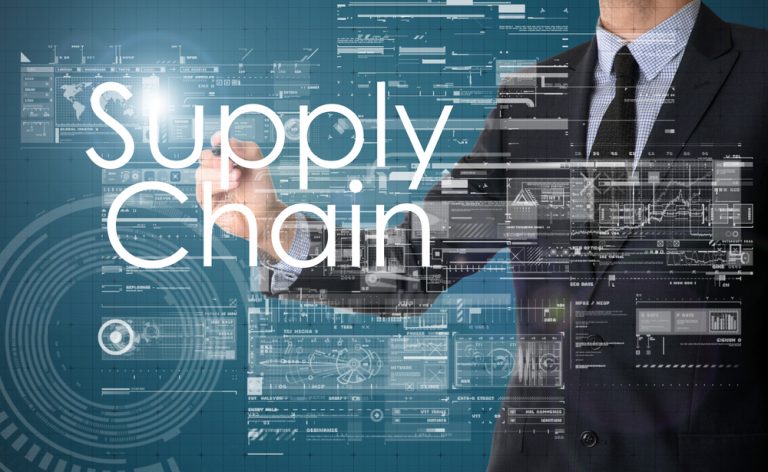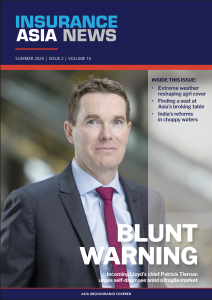Marsh: Managing Cross Border Supply Chain Risks and the Implications of Getting it Wrong
November 9 2016
Douglas Ure, Managing Director and Head of Marsh Risk Consulting, Marsh Asia, with contribution from Robert Perry, Managing Director and Political Risk and Structured Credit Leader, Marsh Asia.
The Global Risk Landscape
The world we live in today is riskier, more interconnected, and more uncertain than ever with far-reaching consequences. In the last year alone, we have seen several events with long-lasting effects on the world. One of them is the UK decision to exit the EU, with potential consequences not just to the UK economy, but across Europe and even further afield. A US Presidential campaign that has been unprecedented, whether by the extensive use of social media, the building of a border wall, and personal attacks against the candidates. Will we see other elections follow in the same fashion?
Long drawn out conflicts across the world are creating regions with serious breakdown in security as well as positioning global players such as Russia and the US against each other. Large scale involuntary migration impacts societies and infrastructures acro ss the world. The World Economic Forum Global Risks Report 2016, of which Marsh & McLennan Companies is a strategic partner, reported that 59.5 million people were forcibly displaced in the world in 2014. Compare this to the times of World War II, where 40 million were forcibly displaced. The average duration of displacement has also increased significantly. The Global Risks Report indicates that refugees on average will stay in host countries for 20 years, compared to nine years in the 1980s.
ss the world. The World Economic Forum Global Risks Report 2016, of which Marsh & McLennan Companies is a strategic partner, reported that 59.5 million people were forcibly displaced in the world in 2014. Compare this to the times of World War II, where 40 million were forcibly displaced. The average duration of displacement has also increased significantly. The Global Risks Report indicates that refugees on average will stay in host countries for 20 years, compared to nine years in the 1980s.
Climate change continues to lead the scientific community to the conclusion that the causes are man-made and the implications are likely to be uncertain and severe. This brings risks related to food security, where more people in the world are likely to go hungry and food prices are likely to be much more volatile, as agricultural production is impacted by changing weather patterns. Natural catastrophes may also have bigger impacts, as more people migrate to larger population centers and our cities and businesses that operate there become more susceptible to such events. Our huge dependency on technology as a means of doing business creates great opportunities for efficiency; however it also creates cyber risks which have the potential to cause major disruptions to business operations and adversely affect reputations.
What does the Global Risk Landscape mean for Risk Management?
Simply, more and more organizations are preparing themselves to respond to the threats when they undoubtedly materialize, developing resilience strategies and responding as effectively as possible. Does this mean that proactive risk management strategies, risk reduction, or avoidance strategies should be discounted? Definitely not, it simply means that good risk management is about doing both; being proactive and implementing risk mitigation and preventative strategies, but also recognizing that you will experience risk events and need an appropriate response to deal with such threats.
Managing Risks in the Supply Chain and Across Borders
Managing risk in your supply chain should be no different to how you manage your internal risks. Consider your supplier, particularly if they are critical, to be an extension of the company, another department that needs to manage their risks. Your ability to control, influence, and change behavior is however restricted and it will involve more effort.
Research conducted by CEB concluded that less than 20% of Enterprise Risk Management (ERM) functions lead one or more third-party risk management activity, and nearly half of those participating in the survey said their teams do not participate in third-party risk management at all. How can we claim to be performing ERM if the ERM teams are not even participating in such a process?
The Increasing Supply Chain Risk
Managing risk in the supply chain and across large geographical boundaries is not new; it has regularly been a top 10 consideration in business risk. The 2016 Allianz Risk Barometer identified Business Interruption & Supply Chain as the top risk, the fourth year in succession it has been rated as the top risk. The risk landscape and actions taken by the corporates to increase outsourcing, as well as become more lean and efficient, results in a conflict between supply chain drivers and good risk management principles as illustrated below left. It is crucial to ensure the risk management function is fully integrated and involved with maximizing efficiency and managing risk.
Cross border an d third party risks are very diverse, more diverse than the risks facing an individual organization as you are essentially considering risks in a range of different industry sectors, and across geographical boundaries involving assets that may be far from your own operations. These can include simple financial failure of the company which can be managed to some extent by conducting proper financial due diligence; however failures can also be caused by much broader risk issues that may be overlooked:
d third party risks are very diverse, more diverse than the risks facing an individual organization as you are essentially considering risks in a range of different industry sectors, and across geographical boundaries involving assets that may be far from your own operations. These can include simple financial failure of the company which can be managed to some extent by conducting proper financial due diligence; however failures can also be caused by much broader risk issues that may be overlooked:
- Physical location and risks associated with neighboring locations
- Exposure to natural hazards, such as fire, flooding, storms, earthquakes, and volcanic eruptions; loss or damage recoverable under specific marine insurance clauses; accidents to the conveyance on which goods are loaded.
- The extent the supplier contracts with other third parties.
- Insolvency of key suppliers
- Intellectual property (IP) risk, such as a demand for an injunction or license, allegations of patent invalidity, and defects in title.
- Political intervention – operations being subject to political interference that may constrain ability to operate. Additional perils can include war, terrorism, confiscation, expropriation, deprivation, nationalization, license cancellation, embargo, and abandonment.
- Rapid change of regulations that reduce the viability to operate, including regulatory shutdown risk, that is the action taken by a regulator (such as the US Food & Drug Administration) that stops or hinders operations at a supplier’s site.
- Transportation delays caused by blockages or port restrictions.
- Labor issues, strikes, and manpower issues.
- Poor labor practices such as employing child labor.
- Actions taken by local communities that disrupt operations.
Spoilt for Choice – What Can be Done?
Common questions from organizations and risk teams, from Marsh’s experience, to manage supply chain risk is simply where to start and how to prioritize. The common questions for help are illustrated on the bottom right.
Addressing the common questions and concerns requires an end to end risk management approach, which analyzes the complexity of the supply chain, identifies the key risks, and quantifies the potential exposures. The approach needs to be integrated with other internal stakeholders and will also need to result in a closely-formed partnership with the key suppliers. Understanding the risks and exposures will result in identification of risk management strategies that need to be imp lemented as the understanding of the risks increases; this will involve internal actions (identification of secondary sourced suppliers, increasing supply chain diversity) as well as changes to how the key suppliers manage their risks (improvements in business continuity plans). The most common approach adopted by organizations is a compliance-driven one which is often inefficient and does not truly result in complex risk issues being managed effectively.
lemented as the understanding of the risks increases; this will involve internal actions (identification of secondary sourced suppliers, increasing supply chain diversity) as well as changes to how the key suppliers manage their risks (improvements in business continuity plans). The most common approach adopted by organizations is a compliance-driven one which is often inefficient and does not truly result in complex risk issues being managed effectively.
The Implications of Getting it Wrong
The impact of not managing the supply chain and cross border risks is very well known. Car companies, technology companies, mobile phone companies, and retailers are some commonly-known industries that have been severely hit by supply chain failures. Many have suffered significant losses when they failed to deliver their product on time, or had their reputation damaged by using a supplier that did not fit their own reputation. This has not only resulted in damage to reputation and financial losses but, in many instances, resulted in competitors being allowed to gain market share, which often require a much longer time to recover.
To learn more about how Marsh Risk Consulting can help you manage your cross border supply chain risks, visit asia.marsh.com or speak with your local Marsh representative.
-
Peak Re | From climate modelling to market opportunity: Forging a new clarity on Southeast Asia’s climate risk
Southeast Asia's protection gap: a crisis of clarity, not just capital
-
BHSI WICare+ | Accelerating Payments, Empowering Recovery
Launched in cooperation with Steadfast’s Singapore network, WICare+ fills the gaps found in traditional coverage and keeps businesses and their workforce secure by covering up to SG$350,000 in medical expenses per claim.
-
BHSI | Managing non-Asian exposure in long-tail lines
While US-exposed business can look attractive to Asian carriers, managing the volatility around the long-term results and the ability to model those losses are crucial, say BHSI’s Marc Breuil and Marcus Portbury.
-
Allianz General | Allianz General combines innovative protection solutions while powering social good to lead Malaysian market
The insurer proactively addresses emerging risks and evolving customer protection needs while giving back to the community.

